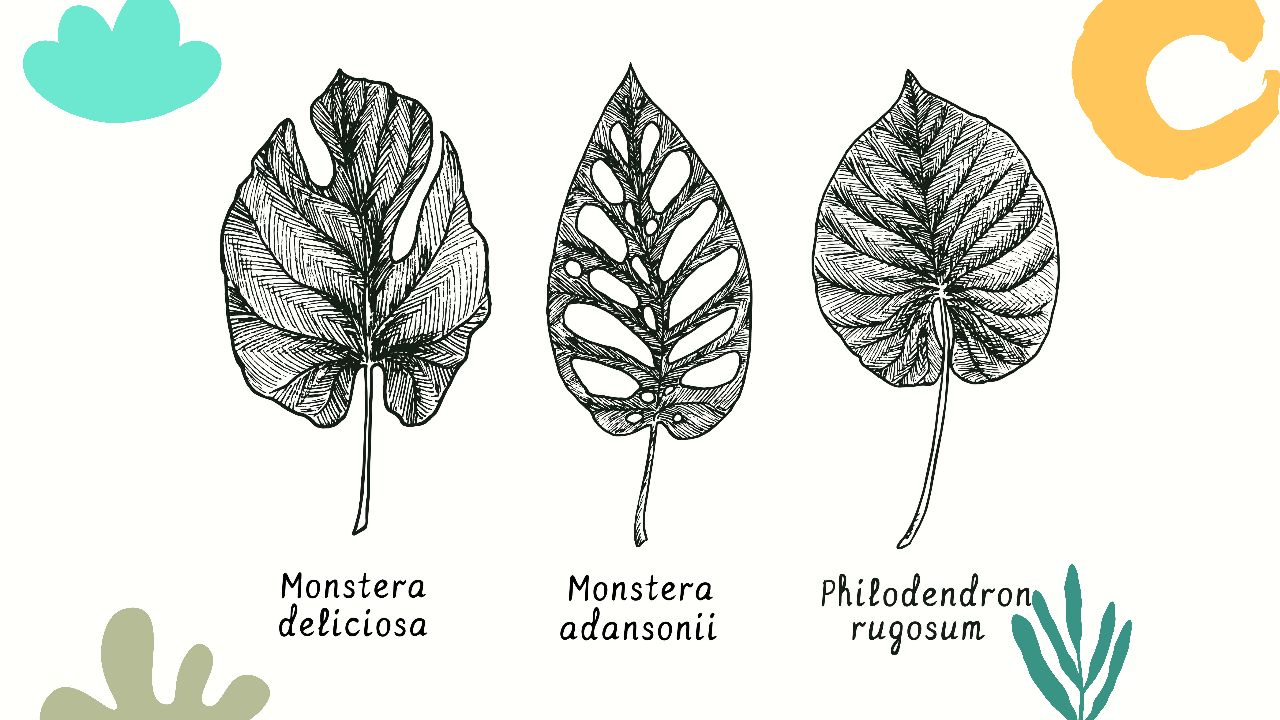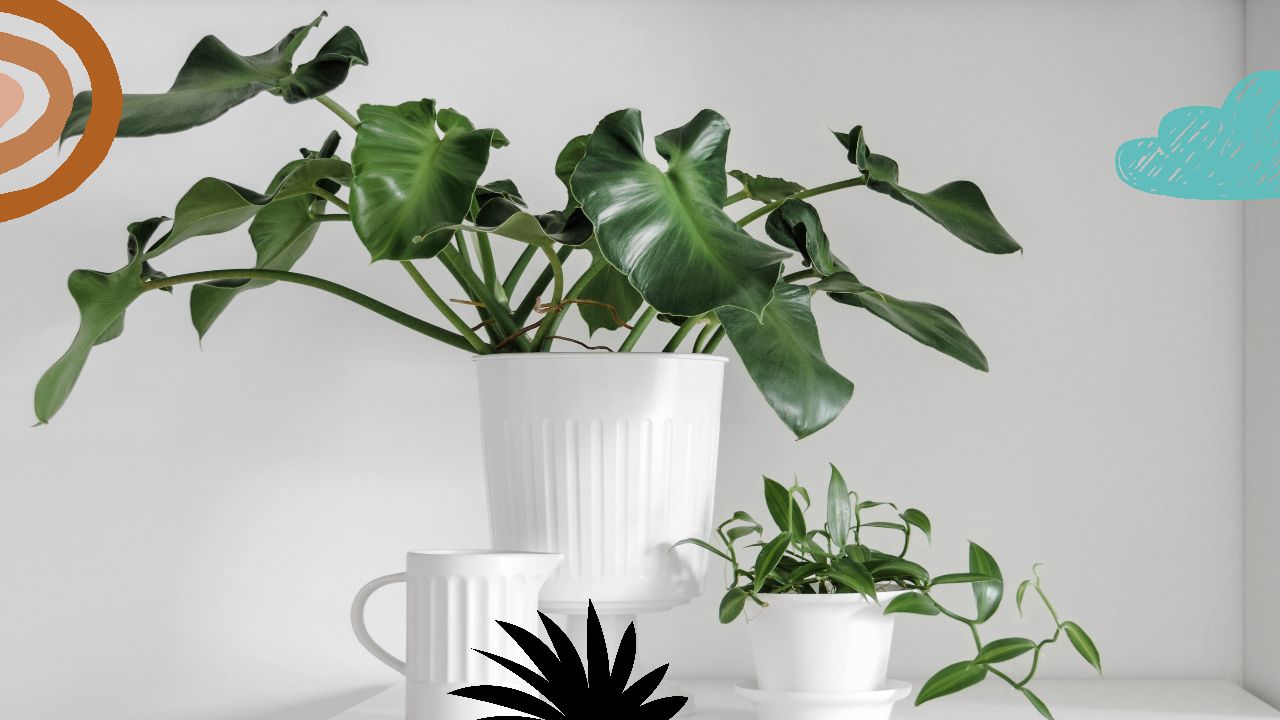
Introduction: Getting to Know Philodendron Rugosum
Are you drawn to unique plants that bring the beauty of the tropics into your home? Meet philodendron rugosum, also known as the "pigskin philodendron" due to its leathery leaves. This tropical plant is more than just its stunning appearance; it's a conversation starter that adds character to any indoor space.
So, what exactly is philodendron rugosum, and why should you consider it as a choice for your plant collection? Apart from its particular texture, the philodendron rugosum plant is beloved for its adaptability and vibrant green foliage that can transform your living space into a lush growth haven.
Whether you're a seasoned plant enthusiast or just starting to explore the world of indoor plants, philodendron rugosum offers a unique experience in care and aesthetic appeal. Discover more about this unique plant and what it takes to nourish it to its full potential. Interested in similar exotic beauties? Explore our comprehensive guide on Philodendron Verrucosum care as well.
Join our newsletter
Stay on top of the latest in landscaping and lawn care with one valuable tip right in your inbox every Saturday morning.
Understanding Philodendron Rugosum Plant Characteristics
The Natural Habitat of Philodendron Rugosum
Native to the tropical rainforests of Central and South America, philodendron rugosum thrives in areas with high humidity, dappled shade, and well-draining soil. In its natural habitat, this unique plant often grows as an epiphyte on larger trees, where it can receive indirect sunlight and the moisture it needs to flourish.
Pigskin Philodendron and Its Particular Texture
One of the most striking features of philodendron rugosum, also known as pigskin philodendron, is its leathery leaves. These large foliage parts are characterized by their rough and rugged texture, similar to that of a pig's skin, hence the nickname. The surface of the leaves is not only visually intriguing but also adds a particular tactile element to your home's greenery.
The plant's unique texture, along with its lush growth, makes it a perfect addition to any indoor plant collection. However, to replicate its natural habitat, the philodendron rugosum requires bright indirect light and moist soil. Understanding these requirements will help in mimicking the conditions it enjoys in the wild, ensuring that your pigskin philodendron thrives.
Are you interested in exploring more houseplants that bring the charm of the tropics into your home? Dive into our extensive collection of houseplants and find the perfect fit for your space.

Potting and Soil Requirements
The Importance of Well-Draining Soil
When it comes to caring for philodendron rugosum, selecting the right type of soil is essential. The plant's roots thrive in a well-draining soil mix that prevents water from becoming stagnant, thus avoiding root rot. This type of soil mimics the conditions of philodendron rugosum's natural habitat, where the soil is constantly moist but never soggy. A mixture that includes elements like sand or perlite can help with drainage and maintain the proper moisture balance.
Orchid Bark in the Soil Mix
Incorporating orchid bark into the potting mix adds a critical component that further ensures good drainage. Orchid bark helps in aerating the soil, allowing the roots to breathe, and maintains a slightly acidic environment that the philodendron rugosum plant prefers. A common mix might consist of one part orchid bark, one part peat moss, and one part perlite, creating a well-draining potting mix that encourages healthy growth.
To truly master the art of indoor plant care, including understanding the specific needs of philodendron rugosum, refer to our ultimate guide to indoor plant care. Here, you'll find detailed insights into soil types, potting techniques, and much more.
Watering and Moisture Needs
Philodendron Rugosum, also known as the pigskin philodendron, has particular watering and moisture needs that are vital to its lush growth and overall health. Here's a detailed look at how to get it right:
Keeping the Soil Moist without Overwatering
Philodendron rugosum plants thrive in moist soil but can be sensitive to overwatering. Keeping the soil moist without making it soggy is essential in preventing root rot and other plant diseases. A well-draining soil mix, regular checks of the plant's roots, and a consistent watering schedule can help maintain the perfect moisture balance. Water the plant when the top inch of soil feels dry to the touch, ensuring that the nursery pot has proper drainage holes.

High Humidity Levels for Lush Growth
High humidity levels are key to the lush growth of philodendron rugosum, reflecting its tropical plant origins. Mist the plant's leaves with a damp cloth or place it close to a humidifier to maintain the required air moisture. Humidity levels of 60-80% are ideal, replicating the natural habitat of this unique plant species. If the leaves start to show signs of droopy leaves or curling leaves, adjusting the humidity might be necessary.
Understanding the moisture needs of your philodendron rugosum will ensure healthy stems, large foliage, and prevent stunted growth. For more insights into caring for similar tropical plants, don't miss our detailed guide on how to care for Syngonium Albo, which shares many of the same moisture and watering preferences.
Light and Temperature Preferences
Understanding the light and temperature preferences of your Philodendron Rugosum is paramount to keeping this beautiful tropical plant thriving. Here's a deep dive into what's needed:
Bright Indirect Light vs. Direct Sunlight
Philodendron Rugosum loves bright indirect light, which encourages lush growth and healthy stems. Placing it near an eastern-facing window or an area with dappled shade can provide the ideal lighting condition. Direct sunlight, on the other hand, can be detrimental to the plant's leaves, leading to yellowing leaves and stress. Use a sheer curtain to filter the light if necessary, making sure to maintain bright indirect sunlight without exposing the plant to harsh rays.

Protecting the Plant from Cold Temperatures
Cold temperatures can wreak havoc on Philodendron Rugosum, leading to droopy and leathery leaves. During the winter season, ensure that the plant is not close to drafty windows or doors and that the indoor temperatures remain consistent. Ideally, the temperature should not drop below 60°F (15°C), reflecting the warm natural habitat of this particular tropical plant.
Understanding the precise balance between light and temperature is key to the overall care of Philodendron Rugosum. Too much direct sunlight or exposure to cold temperatures can hinder the growth and vibrancy of this unique plant. For more insights into indoor plant light requirements, check out our in-depth guide on indoor plant light requirements.
Pruning and Propagating Philodendron Rugosum
When it comes to Philodendron Rugosum, pruning not only helps maintain a lush appearance but also provides an opportunity for propagation. Here's how you can successfully prune and propagate your Philodendron Rugosum:
How to Take Healthy Stem Cuttings
- Select a Healthy Stem: Look for a stem with vibrant green leaves, free from any plant diseases or signs of stress.
- Make a Clean Cut: Using sanitized scissors, make a cut below a leaf node, ensuring you have at least one healthy leaf on the cutting.
- Prepare the Cutting: Remove excess leaves, leaving only one or two. This helps the stem cutting concentrate energy on root development.
- Rooting: Place the cutting in water or moist soil, and provide indirect light. In a few weeks, you'll see new plant roots forming.
The process of taking stem cuttings is an exciting way to create new plants, allowing you to expand your collection or share with friends.
Join our newsletter
Stay ahead of the curve in all things outdoor.
Get the inside scoop on the latest landscaping, lawn care, and fencing trends with 1 actionable tip every Saturday morning.
Air Layering and Using Sphagnum Moss
Air layering is another effective method of propagating Philodendron Rugosum. Here's how you can do it:
- Identify a Suitable Stem: Choose a stem that is healthy and strong.
- Make an Incision: Carefully make a small upward cut under a node.
- Apply Sphagnum Moss: Soak sphagnum moss in water, squeeze out the excess, and wrap it around the cut area.
- Secure with Plastic Wrap: Wrap the moss with plastic wrap to maintain air moisture around the cut.
- Wait for Rooting: Over several weeks, roots will develop inside the sphagnum moss.
- Cut and Pot: Once roots are visible, cut the stem below the rooted area, and pot using a well-draining potting mix.
Learn more about these methods and explore other techniques by visiting our comprehensive guide to uncover the art of plant propagation.
Recognizing and Treating Common Problems
Philodendron Rugosum, also known as pigskin philodendron, is a captivating tropical plant, but like all plants, it can encounter specific problems. Recognizing and addressing these issues ensures that your Philodendron Rugosum stays healthy and continues to thrive.
Preventing and Treating Root Rot
Root rot can be a common problem in Philodendron Rugosum care, especially if the soil remains overly moist. Here's how to prevent and treat root rot:
- Use Well-Draining Soil: Include ingredients like one part orchid bark in the soil mix to ensure proper drainage.
- Avoid Overwatering: Keep the soil moist without drowning the plant's roots. Utilize a watering schedule that allows the top layer to dry slightly between watering.
- Inspect and Treat: If you notice droopy leaves or stunted growth, inspect the root system for rot. Trim affected roots and repot in fresh, well-draining potting mix.
- Fungicides: Consider using organic fungicides to treat any fungal diseases.
By following these guidelines, root rot can be prevented, maintaining the lush growth of your Philodendron Rugosum.

Identifying and Dealing with Spider Mites
Spider mites can pose a threat to the health of Philodendron Rugosum plants. Here's how to identify and combat these common pests:
- Look for Signs: Spider mites may cause yellowing leaves or leathery leaves. Inspect plant's leaves closely for tiny mites or webbing.
- Isolate the Plant: If infested, keep the plant away from others to prevent spreading.
- Use Neem Oil: Applying neem oil can be effective in treating spider mites.
- Maintain High Humidity: Keeping humidity levels high around the plant can deter mites.
- Regularly Wipe Leaves: Using a damp cloth to clean the leaves can help in removing mites and their eggs.
Further insights on dealing with spider mites and other plant diseases can be found in our detailed guide on how to combat common houseplant pests.
Conclusion: Thriving Care for Your Philodendron Rugosum
Caring for Philodendron Rugosum, or pigskin philodendron, is more than a gardening task; it's a rewarding journey that fills your home with beauty and joy. This tropical plant, with its large foliage and particular texture, can thrive indoors with the right care.
From understanding its natural habitat to recognizing the importance of well-draining soil and indirect sunlight, every step is essential. Proper watering ensures moist soil without overwatering, while knowing how to prevent root rot and deal with spider mites keeps the plant healthy. Techniques like taking healthy stem cuttings for propagation add to the excitement of growing Philodendron Rugosum.
This journey of caring and nurturing allows you to connect with nature and create a personal oasis. Find more inspiration for your indoor green haven by exploring how to create your perfect meditation garden with HeyHome.
Embrace the joy of caring for Philodendron Rugosum and let it bring a touch of the wild into your living space.
Join our newsletter
Stay ahead of the curve in all things outdoor.
Get the inside scoop on the latest landscaping, lawn care, and fencing trends with 1 actionable tip every Saturday morning.